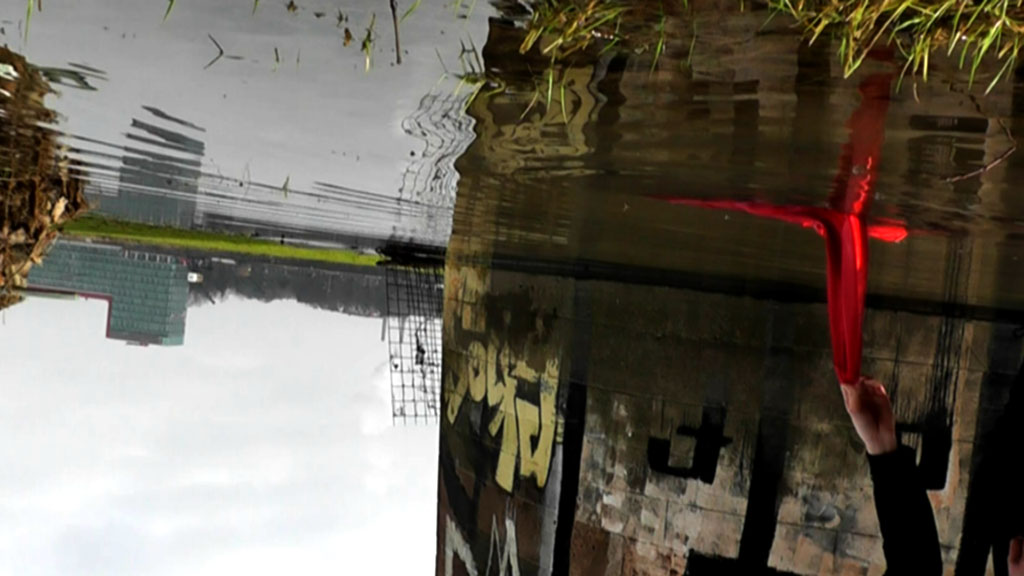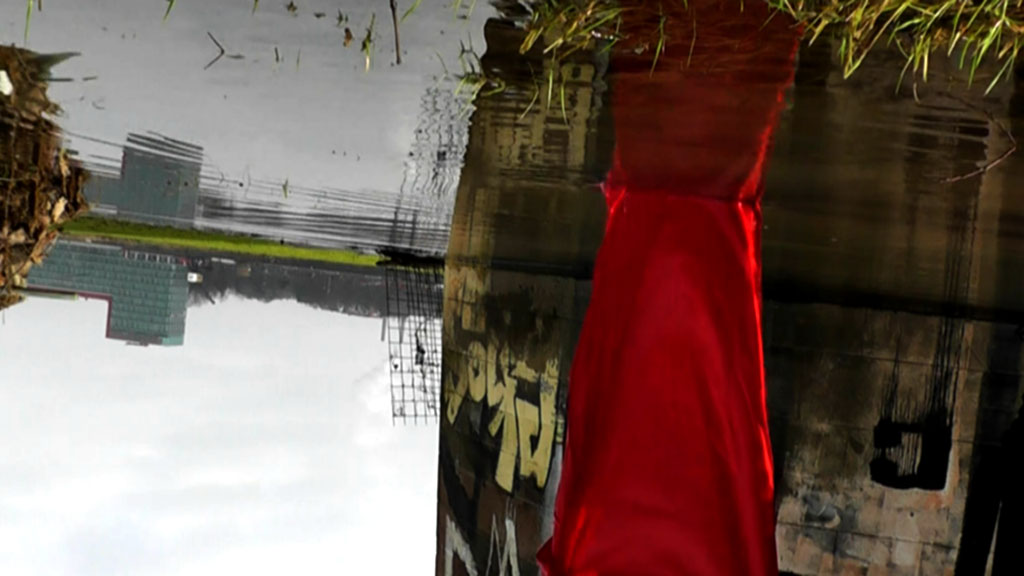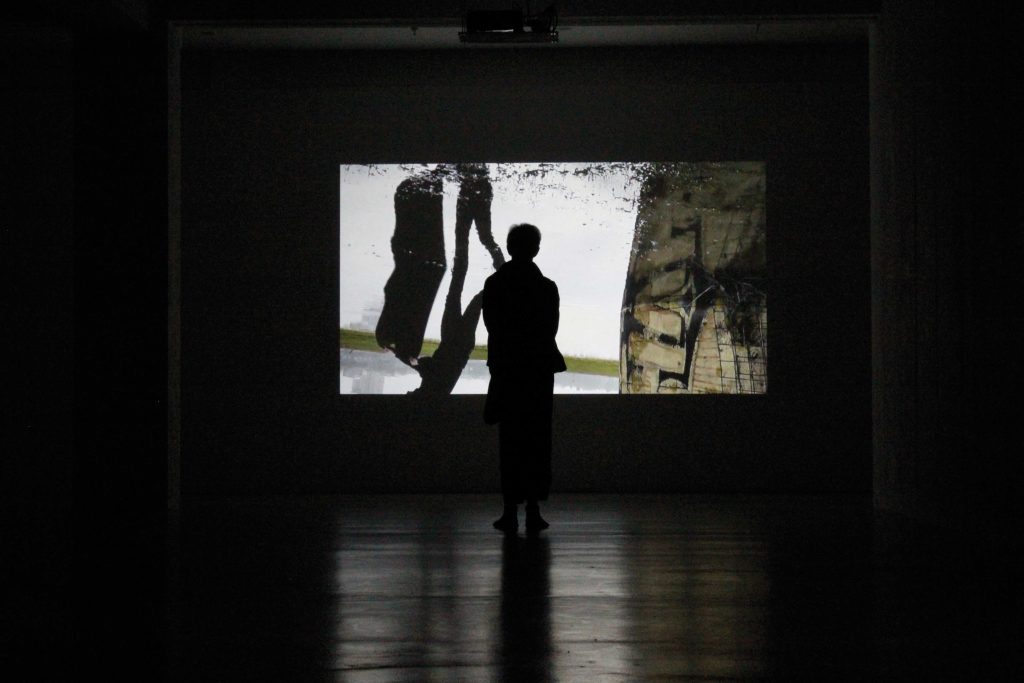HD, 7`20, 2011
Single Channel Video on canvas
High water at the Rhine. Found objects become abstract compositions for a few seconds.
“According to Plato, all artistic creation is a form of imitation: that which really exists (in the “world of ideas”) is a type created by God; the concrete things man perceives in his existence are shadowy representations of this ideal type. Therefore, the painter, the tragedian, and the musician are imitators of an imitation, twice removed from the truth.” (Encyclopedia Britannica; mimêsis (art))
Looking at the main topics of Plato’s aesthetics imitation – or more precisely mimêsis – plays an important role. A mirror reflection might prompt you to look at the thing being reflected; an imitation keeps your eyes on the copy alone. Due to a specific camera angle the video River in Flood can visualize the moment when an “object” and the “imitation of this object” become a new “hybrid form”. The digital video creates a new world where the direct connection of these two ideas of imitation is possible.
Classical civilizations believed the mirror showed an image of the soul, in the art of medieval Europe it was thought to reflect chastity, transience, and sensual pleasures as well as obsession with cleanliness, and in the Baroque era it was a symbol in vanitas imagery. It is considered a medium of self-perception, an instrument for narcissistic self-doubling, and a cult object with magical properties that can conjure up supernatural powers. In the 20th century, the mirror was emancipated from being a subject in depictions to become a material and object of art itself. It is both a vehicle and focal point for philosophical and psychological investigation.



“



Nach Platon ist alles künstlerische Schaffen eine Form der Nachahmung: „Das, was wirklich existiert (in der „Welt der Ideen“), ist ein von Gott geschaffener Typus; die konkreten Dinge, die der Mensch in seiner Existenz wahrnimmt, sind schemenhafte Darstellungen dieses Idealtypus. Daher sind der Maler, der Tragödienerzähler und der Musiker Nachahmer einer Nachahmung, die doppelt von der Wahrheit entfernt ist.” (Encyclopedia Britannica; mimêsis (art))
Hochwasser am Rhein.
Betrachtet man die Hauptthemen der Ästhetik Platons, so spielt die Nachahmung – oder genauer gesagt die Mimêsis – eine wichtige Rolle. Eine Spiegelreflexion kann den Blick auf das Gespiegelte lenken; eine Nachahmung lässt den Blick allein auf die Kopie gerichtet. Durch einen bestimmten Kamerawinkel kann das Video River in Flood den Moment visualisieren, in dem ein „Objekt“ und die „Imitation dieses Objekts“ zu einer neuen „Hybridform“ werden. Das digitale Video schafft eine neue Welt, in der die direkte Verbindung dieser beiden Ideen möglich wird.
In der Antike galt der Spiegel als Abbild der Seele, in der Kunst des mittelalterlichen Europas als Spiegel der Keuschheit, der Vergänglichkeit und der Sinnesfreuden sowie des Sauberkeitswahns, im Barock als Symbol der Vanitas-Bilder. Er gilt als Medium der Selbstwahrnehmung, als Instrument der narzisstischen Selbstverdoppelung und als Kultobjekt mit magischen Eigenschaften, das übernatürliche Kräfte heraufbeschwören kann. Im 20. Jahrhundert emanzipiert sich der Spiegel vom Subjekt der Darstellung zum Material und Objekt der Kunst selbst. Er ist sowohl ein Mittel als auch ein Brennpunkt für philosophische und psychologische Untersuchungen.
